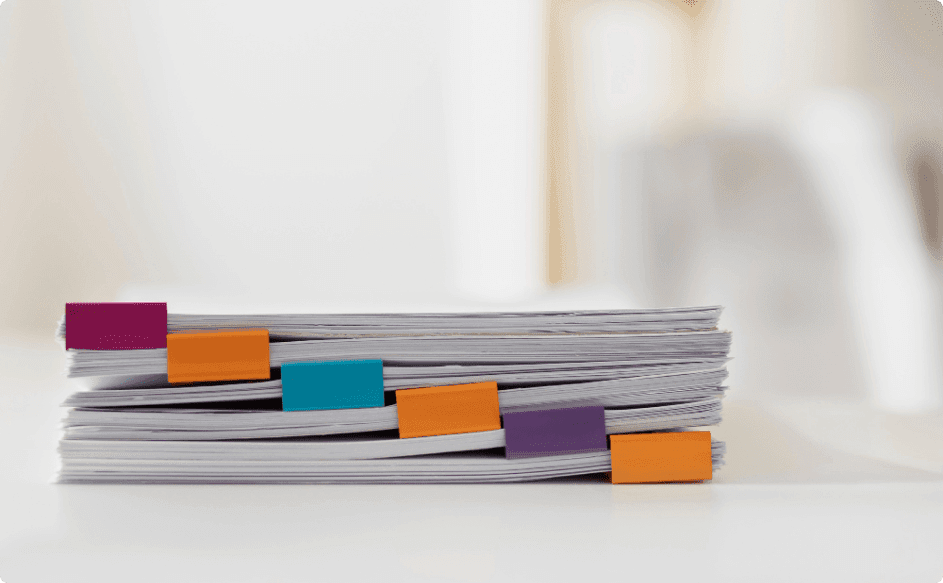
Are you looking for a way to boost employee morale and productivity in your company? Look no further - I've got the secret recipe for success right here. In this blog, I'm going to show you how to create an employee recognition program that will have your team feeling motivated, appreciated, and ready to conquer the world.
Employee recognition programs have been proven time and time again to be a game-changer for businesses of all sizes. They not only increase employee engagement, job satisfaction, and loyalty, but they also contribute to a positive company culture that attracts and retains top talent. So, if you're ready to take your company to the next level, let's dive into the world of employee recognition programs together
What Is An Employee Recognition Program & What Is Its Purpose?

Employee recognition programs are strategic initiatives implemented by businesses to acknowledge and appreciate the valuable contributions of their employees. These programs are designed to create a positive work culture, enhance employee engagement, and in turn, improve overall business performance.
1. Enhancing Employee Morale and Engagement
When employees feel valued and appreciated, their morale and motivation increase significantly. Recognition programs provide a platform for employers to publicly acknowledge and reward outstanding performance, which boosts employee confidence and satisfaction. This sense of validation leads to higher levels of engagement, as employees feel more connected to their work and the organization.
2. Increasing Productivity and Efficiency
Recognizing and appreciating employees' efforts and achievements can have a direct impact on their productivity. When employees receive recognition and rewards for their hard work, they are more likely to go the extra mile, take initiative, and exhibit higher levels of commitment. This increased productivity ultimately benefits the business, as it leads to improved performance and enhanced efficiency.
3. Fostering a Positive Work Culture
A strong employee recognition program helps create a positive work culture where employees feel valued and appreciated. This positive environment encourages teamwork, collaboration, and a sense of belonging. When employees experience a supportive and inclusive workplace, they are more likely to enjoy their work, develop stronger relationships with colleagues, and contribute to a positive and productive team dynamic.
4. Retaining Top Talent
Employee turnover can be a significant challenge for businesses. By implementing a comprehensive recognition program, employers can demonstrate their commitment to employee well-being, satisfaction, and development. When employees feel valued and rewarded for their contributions, they are more likely to stay with the organization long-term, reducing turnover rates and saving the business time and resources associated with hiring and training new employees.
5. Improving Customer Satisfaction
Employee recognition programs not only benefit employees but also have a positive impact on customer satisfaction. When employees feel motivated and engaged, they are more likely to provide exceptional customer service and go above and beyond to meet customer needs. Satisfied customers are more likely to become repeat customers and advocate for the business, leading to increased customer loyalty and business growth.
Implementing an employee recognition program in your business is essential to enhance employee morale, boost productivity and efficiency, foster a positive work culture, retain top talent, and improve customer satisfaction. By acknowledging and appreciating the efforts and achievements of your employees, you create an environment where everyone feels valued, motivated, and committed to the success of the organization.
Related Reading
• Employee Award Programs • Modern Employee Recognition Programs • Recognizing Employee Contributions • Employee Rewards And Recognition
Benefits of An Employee Recognition Program

1. Increased Employee Engagement and Motivation
Employee recognition programs play a crucial role in boosting employee engagement and motivation. When employees feel appreciated and recognized for their hard work and contributions, they are more likely to be motivated to go above and beyond their job responsibilities. Recognition programs create a positive work environment where employees feel valued, leading to improved job satisfaction and increased productivity.
2. Enhanced Employee Retention
A well-designed employee recognition program helps in retaining top talent within the organization. Recognizing and appreciating employees' efforts and achievements demonstrates that their work is valued, which fosters a sense of loyalty and commitment. When employees feel acknowledged and appreciated, they are less likely to seek opportunities elsewhere. This reduces turnover rates and the costs associated with hiring and training new employees.
3. Improved Teamwork and Collaboration
Employee recognition programs also contribute to fostering teamwork and collaboration within the organization. By acknowledging and rewarding employees for their contributions, recognition programs promote a culture of appreciation and support. This encourages employees to work together, share knowledge, and collaborate on projects. When employees feel recognized for their teamwork and collaboration, they are more likely to continue working together effectively to achieve common goals.
4. Boosted Employee Morale
Employee recognition programs have a positive impact on overall employee morale. When employees are recognized for their hard work and achievements, it boosts their self-confidence and sense of pride in their work. This, in turn, creates a more positive and enthusiastic work environment. When employees feel good about themselves and their work, they are more likely to have higher job satisfaction and a positive attitude, leading to increased productivity and better overall performance.
5. Increased Employee Loyalty
Implementing an employee recognition program helps foster a sense of loyalty among employees. When employees feel appreciated and recognized, they develop a stronger emotional connection to the organization. This emotional bond results in increased loyalty, as employees are more likely to remain committed to the company's mission and goals. By recognizing employees' efforts and achievements, organizations can create a loyal workforce that is dedicated to the company's success.
6. Improved Customer Satisfaction
Employee recognition programs indirectly contribute to improved customer satisfaction. When employees feel valued and motivated, they are more likely to provide excellent customer service. Satisfied and engaged employees are more attentive to customer needs, go the extra mile to resolve issues, and strive to exceed customer expectations. This leads to enhanced customer satisfaction, loyalty, and ultimately, improved business performance.
7. Positive Organizational Culture
An effective employee recognition program helps shape a positive organizational culture. By recognizing and appreciating employees' efforts, organizations demonstrate that they value and prioritize their employees. This creates a culture of appreciation, where employees are encouraged to recognize and support each other. A positive organizational culture fosters a sense of pride, teamwork, and loyalty, attracting top talent and improving overall company performance.
8. Increased Innovation and Creativity
Employee recognition programs can also have a significant impact on fostering innovation and creativity within the organization. When employees feel valued and recognized, they are more likely to feel empowered to share their ideas and suggestions. Recognizing and rewarding innovative ideas and creative solutions encourages employees to think outside the box and contribute to the organization's growth and success. This leads to a more innovative and competitive business environment.
9. Positive Employer Branding
Implementing an employee recognition program can have a positive impact on employer branding. When employees feel appreciated and recognized, they become advocates for the organization. They are more likely to share positive experiences and recommend the organization as a great place to work. This positive word-of-mouth can attract top talent and improve the company's reputation as an employer of choice.
10. Increased Productivity and Performance
Employee recognition programs contribute to increased productivity and performance. When employees feel recognized and appreciated, they are more motivated to achieve their goals and exceed expectations. Recognizing employees' efforts and achievements boosts their morale and confidence, leading to improved job performance and increased productivity. This, in turn, positively impacts the overall success of the organization.
Complete Guide On How To Create An Employee Recognition Program

1. Understanding the Importance of Employee Recognition
Employee recognition is crucial for creating a positive work environment and fostering employee engagement. It boosts morale, increases productivity, and improves employee retention rates. By recognizing and appreciating employees' hard work and contributions, organizations can create a culture of appreciation and motivation.
2. Setting Clear Objectives for the Recognition Program
Before implementing an employee recognition program, clearly define your objectives. Are you aiming to improve overall employee satisfaction, increase productivity, or enhance teamwork? Understanding your goals will help you design a program that aligns with your organization's values and priorities.
3. Defining Recognition Criteria and Types
Determine the criteria for recognizing employees. Will recognition be based on performance, behavior, or a combination of both? Consider recognizing achievements such as meeting targets, taking initiative, displaying leadership qualities, or going above and beyond expectations.
Recognition can take various forms, including verbal praise, written appreciation, public acknowledgment, awards, certificates, or small tokens of appreciation. Choose the types of recognition that are meaningful and valuable to your employees.
4. Involving Employees in the Program Design
For an engaging recognition program, involve employees in the design process. Seek their input and ideas on what types of recognition they find most motivating and meaningful. Conduct surveys, focus groups, or one-on-one conversations to gather their perspectives. By including employees in the decision-making process, you'll ensure that the program resonates with them and meets their needs.
5. Creating a Recognition Committee or Team
Form a recognition committee or team to oversee the program. This group should include representatives from various departments and levels of the organization. Their role will be to plan, implement, and evaluate the recognition program. Encourage them to brainstorm creative and innovative ways to recognize employees, ensuring diversity and inclusivity.
6. Developing a Budget and Resources
Allocate a budget for your recognition program. It doesn't have to be extravagant, but it should be sufficient to provide meaningful recognition. Consider investing in rewards, certificates, or events that celebrate employee achievements. Ensure you have the necessary resources, such as dedicated personnel, technology, or software to manage and track the recognition program effectively.
7. Implementing a Peer-to-Peer Recognition Component
Empowering employees to recognize and appreciate each other's contributions is a powerful way to boost engagement. Implement a peer-to-peer recognition component in your program, allowing employees to nominate and celebrate their colleagues. This not only creates a positive work culture but also encourages teamwork and collaboration.
8. Utilizing Technology for Efficiency and Effectiveness
Leverage technology to streamline and enhance your recognition program. Use employee recognition software or platforms to automate the nomination and tracking processes. These tools make it easier for managers and employees to recognize, document, and share achievements. They can also provide analytics and insights to measure the program's effectiveness and identify areas for improvement.
9. Ensuring Consistency and Fairness
Consistency and fairness are vital for an engaging recognition program. Establish clear guidelines and criteria for recognition, ensuring they are transparent and accessible to all employees. Avoid favoritism or biases by implementing a fair nomination and selection process. Regularly assess the program's effectiveness and make adjustments as needed to ensure it remains fair and equitable.
10. Celebrating Milestones and Achievements
Recognize both small victories and significant milestones. Celebrate achievements individually, such as work anniversaries or project completions, as well as collectively, like team successes or departmental accomplishments. Consider organizing social events, team-building activities, or recognition ceremonies to mark these milestones and show appreciation.
11. Evaluating and Improving the Program
Periodically evaluate the effectiveness of your employee recognition program. Collect feedback from employees to understand their experiences and identify areas for improvement. Analyze the program's impact on employee engagement, productivity, and retention. Use these insights to refine and enhance your recognition initiatives continually.
By following this complete guide, you can create an engaging employee recognition program that fosters a culture of appreciation, motivation, and high performance within your organization.
42 Most Engaging Employee Recognition Program Ideas

1. Employee of the Month
Recognize one outstanding employee each month for their exceptional contributions and achievements.
2. Peer-to-Peer Recognition
Encourage employees to recognize and appreciate their colleagues' efforts through a peer recognition program.
3. Manager's Choice Award
Allow managers to nominate and reward employees who consistently go above and beyond their responsibilities.
4. Spot Awards
Surprise employees with on-the-spot recognition for their exceptional performance or actions.
5. Milestone Celebrations
Celebrate employees' years of service or significant milestones with personalized gifts or events.
6. Team Building Activities
Organize team-building activities to promote collaboration, communication, and recognition within teams.
7. Wellness Programs
Recognize employees' efforts to maintain a healthy lifestyle by offering wellness-related rewards or incentives.
8. Innovation Awards
Recognize employees who come up with innovative ideas or solutions that benefit the company.
9. Customer Service Excellence
Acknowledge and reward employees who consistently deliver excellent customer service.
10. Leadership Development Program
Recognize employees who show potential for leadership and provide them with opportunities for growth and development.
11. Learning and Development Achievement
Reward employees who invest time and effort in improving their skills and knowledge through professional development programs.
12. Idea Recognition Program
Encourage employees to share their ideas for improving processes, products, or services, and reward them for their contributions.
13. Cross-Department Collaboration
Recognize and reward employees who actively collaborate and build relationships with colleagues from different departments.
14. Above and Beyond Awards
Acknowledge employees who consistently go above and beyond their job responsibilities to achieve exceptional results.
15. Quality Focus Awards
Recognize employees who prioritize and deliver high-quality work consistently.
16. Customer Testimonials
Highlight employees who receive positive feedback or testimonials from satisfied customers.
17. Employee Appreciation Day
Organize a special day or event dedicated to showing appreciation for all employees' hard work and dedication.
18. Volunteer Recognition
Acknowledge employees who engage in volunteer activities outside of work and contribute to their communities.
19. Flexible Work Arrangements
Reward employees who consistently demonstrate excellent performance while working flexible schedules or remote arrangements.
20. Sales Achievements
Recognize and reward top-performing sales employees who exceed their targets and contribute to the company's success.
21. Employee Referral Program
Encourage employees to refer qualified candidates for job openings and reward them for successful referrals.
22. Personal Development Grants
Provide employees with opportunities to pursue personal development goals and reward them for their efforts.
23. Appreciation Wall
Create a physical or virtual wall where employees can post notes of appreciation for their colleagues.
24. Gamified Recognition
Implement a gamified platform where employees can earn points or badges for their achievements and contributions.
25. Global Recognition
Extend recognition efforts globally to acknowledge and appreciate employees across different locations.
26. Skills-Based Recognition
Recognize employees for their specific skills and expertise that contribute to the company's success.
27. Social Media Shoutouts
Highlight exceptional employees on social media platforms to showcase their achievements and increase visibility.
28. Mentorship Program
Recognize and reward employees who participate in mentorship programs and contribute to the growth of their mentees.
29. Work-Life Balance Initiatives
Acknowledge employees who actively pursue a healthy work-life balance and reward them for their efforts.
30. Departmental Awards
Recognize outstanding achievements within specific departments to boost departmental pride and camaraderie.
31. Health and Safety Excellence
Reward employees who consistently prioritize and maintain a safe and healthy work environment.
32. Innovation Challenges
Organize innovation challenges or competitions to encourage employees to come up with creative solutions to business problems.
33. Leadership Appreciation
Recognize and reward managers and leaders who demonstrate exceptional leadership skills and contribute to employee development.
34. Continuous Improvement Awards
Acknowledge employees who contribute to continuous improvement efforts within their teams or departments.
35. Diversity and Inclusion Recognition
Recognize employees who actively promote diversity and inclusion within the workplace.
36. Lunch or Coffee with the CEO
Offer employees the opportunity to have a lunch or coffee meeting with the CEO as a special recognition.
37. Wellness Challenges
Organize wellness challenges or competitions to encourage employees to adopt healthy habits and reward their participation.
38. Work Anniversary Celebrations
Celebrate employees' work anniversaries with personalized messages, gifts, or events.
39. Innovation Time-off
Provide employees with dedicated time to work on their innovative ideas, and reward successful outcomes.
40. Team Appreciation Events
Organize team-building events or outings to show appreciation for the collective efforts of a team.
41. Learning and Development Awards
Recognize employees who actively engage in learning and development activities and apply their new skills to their work.
42. Employee Excellence Awards
Annually recognize top-performing employees across various categories such as leadership, teamwork, innovation, and customer service.
By implementing these engaging employee recognition program ideas, you can create a positive and motivating work environment where employees feel valued and appreciated for their contributions.
Related Reading
• Words Of Appreciation For Good Work Done By Team • How To Recognize Employees • Recognition Examples • How Do You Like To Be Recognized • Recognizing A Coworker • Reward And Recognition Ideas • Fun Employee Recognition Ideas • Formal Recognition • Team Member Recognition • Performance Recognition • Rewards And Recognition Speech Example • Reasons To Recognize Employees • Reward And Recognition Strategies • Recognition For Leadership • Reasons For Rewarding Employees • Employee Wall Of Fame Ideas
Ensuring Fairness In Recognizing Employees

Creating an employee recognition program is not just about acknowledging and appreciating your top performers; it's also about fostering a sense of fairness and consistency among your entire workforce. When employees feel that recognition and rewards are distributed fairly, it enhances motivation, engagement, and overall job satisfaction. Here are some effective strategies to ensure fairness and consistency in recognizing and rewarding employees.
1. Transparent Criteria and Guidelines
Developing and communicating transparent criteria and guidelines for recognition and rewards is crucial. Clearly define what behaviors, achievements, or milestones warrant recognition or rewards. This ensures that employees understand the expectations and can work towards meeting them. By having transparent criteria, you eliminate any ambiguity or favoritism in the process.
2. Objective Performance Metrics
Incorporating objective performance metrics in your recognition program is essential for fairness and consistency. These metrics can include quantitative measures like sales targets, productivity levels, customer satisfaction scores, or qualitative assessments such as teamwork, innovation, and leadership abilities. By utilizing objective metrics, you provide a level playing field for all employees, regardless of their role or personal relationships.
3. Regular Feedback and Evaluation
Offering regular feedback and evaluations is crucial for maintaining fairness and consistency. Establish a performance management system that includes ongoing feedback and performance evaluations. This allows employees to receive constructive feedback on their performance and provides them with an opportunity to improve. Regular evaluations ensure that recognition and rewards are based on current and accurate data, rather than relying solely on subjective opinions.
4. Multiple Recognition Channels
Creating multiple channels for recognition allows employees to be recognized and rewarded in various ways. Some employees may appreciate public recognition in team meetings or company-wide announcements, while others may prefer private recognition, such as a personalized email or one-on-one conversation. By providing different avenues for recognition, you accommodate diverse preferences and ensure fairness in the program.
5. Consistent Application of Policies
To maintain fairness and consistency, it is crucial to apply recognition and reward policies consistently across all levels and departments of the organization. Avoid making exceptions or bending the rules for certain individuals or teams, as this can create a perception of favoritism. Consistency in applying policies sends a clear message that recognition is based on merit and performance, reinforcing a fair and level playing field for all employees.
6. Calibrated Rewards
When designing your recognition program, consider employing a calibrated rewards system. This means that different levels of recognition and rewards are available to acknowledge various degrees of achievements or contributions. By calibrating rewards, you ensure that recognition is proportionate to the effort and impact of the employee's performance. This approach allows for fairness and prevents excessive rewards for minor accomplishments, which can lead to resentment among other employees.
7. Regular Program Evaluation and Adjustments
Continuously evaluate and adjust your recognition program to maintain fairness and consistency. Gather feedback from employees to understand their perceptions of the program's effectiveness and fairness. Analyze data on recognition and rewards to identify any potential biases or gaps. Regularly reviewing and adjusting your program ensures that it remains aligned with the evolving needs of your workforce and allows you to address any concerns promptly.
By implementing these strategies, you can create a recognition program that fosters a fair and consistent work environment, where employees feel acknowledged and motivated to continue delivering their best.
Metrics To Use To Evaluate The Success of Your Employee Recognition Program

Employee recognition programs are essential for boosting employee morale, engagement, and productivity. To ensure the success of such programs, it is crucial to establish metrics and measurements to evaluate their effectiveness. These metrics provide valuable insights into the impact of the program and help identify areas for improvement. Here are some key metrics and measurements to consider:
1. Employee Satisfaction
Tracking employee satisfaction is a fundamental metric to evaluate the success of your employee recognition program. Conduct regular surveys to gauge employee perceptions, attitudes, and overall satisfaction. Look for changes in satisfaction levels before and after implementing the program to determine its impact.
2. Employee Engagement
Employee engagement is directly linked to productivity and performance. Monitor engagement levels through metrics such as absenteeism rates, turnover rates, and employee participation in company activities. A successful recognition program should contribute to higher engagement levels and lower turnover rates.
3. Recognition Frequency
Measure the frequency of recognition within your organization. This metric indicates how often employees are recognized for their achievements and contributions. A higher frequency of recognition suggests a more successful program, as it demonstrates a culture of appreciation and motivation.
4. Employee Retention
Employee retention is a critical indicator of the program's success. Monitor retention rates and compare them to previous periods to determine any improvements. A well-designed recognition program helps retain top talent by fostering a positive work environment.
5. Performance Metrics
Evaluate performance metrics such as sales targets, customer satisfaction scores, or project deadlines. Compare the performance of employees who receive regular recognition to those who do not. If recognized employees consistently outperform others, it indicates the program's effectiveness.
6. Peer and Manager Feedback
Collect feedback from both peers and managers concerning the recognition program. This feedback will help identify any shortcomings and areas for improvement. Assess whether the program is fostering positive relationships among team members and encouraging a culture of appreciation.
7. Program Utilization
Track the utilization of the recognition program itself. Monitor the number of nominations, awards, or points redeemed for rewards. Low utilization may indicate a lack of awareness or engagement with the program, necessitating adjustments to increase participation.
8. Return on Investment (ROI)
Evaluate the financial impact of the recognition program by assessing the return on investment. Compare the costs of the program, including rewards and administration, to the benefits gained, such as increased productivity and reduced turnover costs. An effective program should provide a positive ROI.
Incorporating these metrics and measurements into your evaluation strategy will provide a comprehensive understanding of the success of your employee recognition program. By continuously analyzing and adjusting the program based on these metrics, you can maximize its impact on employee satisfaction, engagement, and overall organizational performance.
How Often Should You Recognize Employees?

Creating an effective employee recognition program involves determining how often recognition should be given to employees. Finding the right balance is key, as both too little and too much recognition can have negative consequences.
1. Frequency of Recognition
Recognition should be given regularly to maintain a positive and motivating work environment. The frequency depends on various factors such as the nature of the work, the size of the organization, and the individual preferences of employees. It is important to strike a balance between frequent recognition and avoiding it becoming mundane or expected.
2. Timeliness
Recognition should be provided in a timely manner to reinforce positive behaviors and achievements. When employees are recognized promptly, they are more likely to connect the recognition with their actions and feel motivated to continue performing at a high level. Delayed recognition may diminish its impact and effectiveness.
3. Continuous Feedback
Recognition should be an ongoing process rather than a one-time event. Providing continuous feedback allows employees to stay engaged and motivated throughout the year. Consider implementing regular check-ins or performance evaluations to provide constructive feedback and acknowledge accomplishments.
4. Balance and Variety
A well-designed recognition program should strike a balance between different types of recognition. Consider incorporating both formal and informal recognition, such as public praise, certificates, monetary rewards, or opportunities for professional growth. Offering a variety of recognition methods ensures that all employees feel valued and appreciated.
5. Tailor to Individual Preferences
Recognizing employees' individual preferences and needs is crucial. Some employees may prefer public recognition, while others might prefer a more private acknowledgment. Take the time to understand what motivates each employee and tailor the recognition program accordingly.
6. Celebrate Milestones
In addition to regular recognition, it is important to celebrate significant milestones and achievements. Whether it's work anniversaries, reaching sales targets, or completing a major project, acknowledging these milestones demonstrates appreciation for employees' long-term commitment and dedication.
7. Adjust and Evolve
Regularly evaluate the effectiveness of your recognition program and be prepared to make adjustments based on feedback and changing circumstances. Employee preferences and organizational dynamics may shift over time, so it's essential to keep the program fresh and relevant.
By considering the frequency of recognition, timeliness, continuous feedback, balance and variety, individual preferences, milestone celebrations, and the need for program evolution, you can create an employee recognition program that effectively motivates and engages your workforce.
How To Set Up Your Employee Recognition Program for Long-Term Success

1. Communicate the Program's Impact
Keep employees informed about the positive outcomes and benefits resulting from the employee recognition program. Show them how their efforts are contributing to the organization's success and acknowledge the program's role in enhancing employee engagement, productivity, and morale. This open communication will help sustain enthusiasm and motivation among employees.
2. Recognize a Variety of Achievements
To maintain momentum, it is important to recognize and reward a diverse range of accomplishments. Expand the criteria for recognition beyond just hitting sales targets or meeting goals. Include recognition for innovation, teamwork, customer service, and other desirable behaviors aligned with company values. This ensures that the program remains inclusive and motivates employees in different roles and departments.
3. Make Recognition Personal and Timely
Tailor recognition efforts to each individual's preferences and needs. Some employees may prefer public recognition, while others may appreciate private acknowledgement. Implement a variety of recognition methods, such as peer-to-peer recognition, manager recognition, or company-wide events. Also, ensure that recognition is given in a timely manner, as delayed recognition loses its impact.
4. Foster a Culture of Recognition
Embed recognition into the company's culture by encouraging everyone, from top leadership to frontline employees, to participate in recognizing and appreciating their colleagues. Provide training and resources to help managers and employees effectively give and receive recognition. Foster a positive and supportive work environment where recognizing and celebrating achievements is the norm.
5. Evaluate and Revise the Program
Regularly review and assess the effectiveness of the employee recognition program. Collect feedback from employees to identify areas for improvement or potential challenges. Use data and metrics to measure the program's impact on employee engagement, retention, and performance. Based on this feedback and analysis, make necessary adjustments to the program to ensure its long-term success.
6. Continuously Reinforce the Program
Avoid complacency by continuously reinforcing the importance of the employee recognition program. Regularly remind employees about the program, its purpose, and the benefits it brings. Utilize various communication channels, such as email newsletters, intranet announcements, or team meetings, to keep the program at the forefront of employees' minds. By consistently reinforcing the program's value, you will sustain engagement and participation.
7. Celebrate Milestones and Anniversaries
Recognize and celebrate significant milestones and anniversaries, both at the individual and organizational level. This can include work anniversaries, personal achievements, or major project milestones. By acknowledging these important moments, you demonstrate that the organization values long-term commitment and contributions. Celebrations can take the form of awards, personalized gifts, or special events to make these occasions memorable.
8. Stay Flexible and Adaptable
As the company evolves, so should the employee recognition program. Stay attuned to changing employee needs, preferences, and industry trends. Continuously seek feedback and suggestions from employees to ensure the program remains relevant and effective. Being flexible and adaptable allows the program to grow and evolve alongside the organization, maintaining its long-term success.
By following these steps, you can sustain the momentum and long-term success of your employee recognition program, creating a positive and rewarding work environment that motivates and engages employees.
How To Continuously Improve Your Employee Recognition Program

Creating an employee recognition program is just the first step towards building a positive and engaged workforce. To ensure its long-term success, it is important to continuously improve and evolve the program based on feedback and changing needs. Here are some strategies to help you achieve this:
1. Gather and analyze feedback
Regularly seek feedback from employees regarding their experience with the recognition program. This can be done through surveys, focus groups, or one-on-one conversations. Analyze the feedback to identify any areas for improvement or new initiatives that can be introduced. Look for patterns or common themes to guide your decision-making process.
2. Involve employees in the process
Employees are the best source of ideas and suggestions for improving the recognition program. Involve them in the decision-making process by forming a cross-functional recognition committee or establishing a suggestion box. Encourage employees to share their ideas and opinions on how the program can be enhanced. This not only increases engagement but also ensures that the program meets their needs and expectations.
3. Adapt to changing needs
The needs and preferences of employees may change over time. Stay up-to-date with the latest trends in employee recognition and adapt your program accordingly. For example, if remote work becomes more prevalent, consider incorporating virtual recognition initiatives such as online appreciation platforms or virtual team-building activities. By staying flexible and responsive to changing needs, you can ensure that the program remains relevant and impactful.
4. Provide ongoing training and resources
To continuously improve and evolve the employee recognition program, it is important to provide ongoing training and resources to managers and employees. This can include workshops or webinars on effective recognition strategies, providing access to online resources and guidelines, or offering coaching sessions for managers. By investing in the development of recognition skills, you can empower employees to provide meaningful and impactful recognition.
5. Celebrate milestones and achievements
Recognizing and celebrating milestones and achievements within the recognition program itself can help to keep it fresh and engaging. For example, you can introduce new awards or categories, highlight success stories, or create special events to honor outstanding contributions. By regularly celebrating the accomplishments of employees, you not only reinforce the value of the recognition program but also inspire others to strive for excellence.
6. Continuously monitor and evaluate
Establish a system for monitoring and evaluating the effectiveness of the employee recognition program. Track key metrics such as participation rates, employee satisfaction scores, and productivity levels to assess the impact of the program. Use this data to identify areas of improvement or areas where additional resources may be needed. Regularly review the program's performance and make adjustments as necessary to ensure its continued success.
By continuously improving and evolving your employee recognition program based on feedback and changing needs, you can create a culture of appreciation and engagement within your organization. Remember that recognition is not a one-time event but an ongoing process that requires attention and effort. Stay committed to providing meaningful and impactful recognition, and your employees will feel valued and motivated to perform at their best.
Build A Meaningful Employee Recognition Program With Ease with Giftpack
Finding the perfect gift to recognize and appreciate someone's leadership can be a daunting task. Giftpack is here to simplify the corporate gifting process and maximize the impact of each gift, making recognition for leadership more meaningful and memorable than ever before.
Custom AI Algorithm for Highly Personalized Gifts
At Giftpack, we understand that everyone has their own unique personality and preferences. That's why we utilize our custom AI algorithm to create highly customized scenario swag box options for you. By carefully considering an individual's basic demographics, preferences, social media activity, and digital footprint, we tailor each gift selection process to ensure that it resonates with the recipient.
An Extensive Catalog of Over 3.5 Million Products Worldwide
With a vast catalog of over 3.5 million products worldwide (which is ever increasing), we curate the most fitting gifts for your recognition needs. Our team handpicks a wide range of locally and globally sourced gifts, ensuring that personalized gifting is accessible and achievable on a large scale.
Global Delivery for Meaningful Connections Across the Globe
One of the key features of Giftpack is our global delivery service. No matter where your recipients are located, we can deliver personalized gifts to their doorstep. This allows you to build meaningful connections and show appreciation to your employees, customers, VIP clients, friends, and family members across the globe.
User-Friendly Platform for a Seamless Experience
We believe that the gifting process should be as seamless as possible. That's why Giftpack provides an extremely user-friendly platform. With just a few clicks, you can easily navigate through our catalog, select the perfect gifts, and customize them to fit your recognition program. We strive to make the entire experience hassle-free and enjoyable for our users.
Take the First Step in Building a Meaningful Employee Recognition Program
If you're looking to build a meaningful employee recognition program, Giftpack is here to help. Sign up today to try out Giftpack for free and experience the power of personalized gifting. With our AI algorithm, extensive catalog, global delivery, and user-friendly platform, you can elevate your recognition program and make a lasting impact on your team.
Start recognizing and appreciating leadership in a truly personalized and meaningful way with Giftpack. Sign up for free today and let us help you create unforgettable moments of recognition for your team.
Related Reading
• Employee Award Programs • Modern Employee Recognition Programs • Recognizing Employee Contributions
Make your gifting efficient and improve employee attrition rates with Giftpack AI
Visit our product page to unlock the power of personalized employee appreciation gifts.